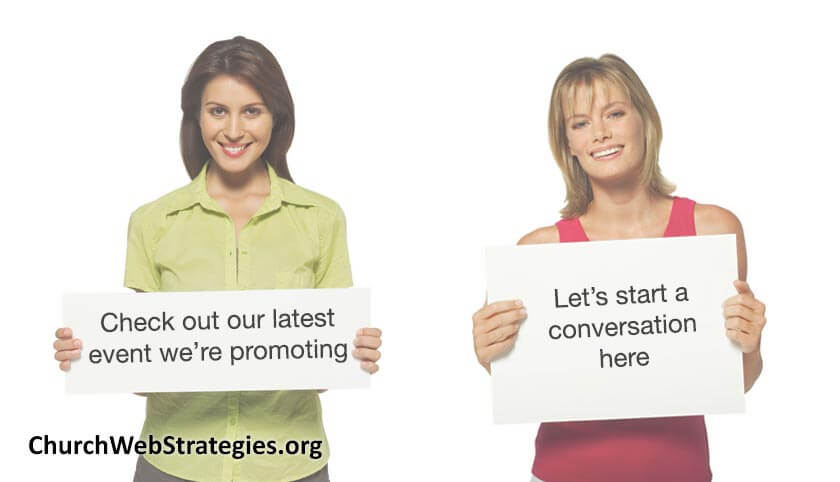Many questions arise when a church decides to do that “social media thing”. Who should your church market to, what platforms are the best, how should they push content, and why should they respond to their audience? These and many other questions can be answered by creating a two-pronged attack plan that deals with social media marketing and social media engagement.
Social media is a new term for an old practice; interactive communities on the web. What started off with chat rooms, message boards, and E-mail lists is now Facebook, Twitter, and LinkedIn. So what is so different? At the core, not much; they are still online communities where like-minded people can connect with each other. Yet technology has changed the game by making the content more interactive, with nearly immediate responses. The question is, how can my church take advantage of this?
Social Media Marketing
Social media is not just for telling the world what you had for breakfast. It is a platform for communicating with the masses about a multitude of things. You can develop your brand by targeting specific demographics with specific content. In fact you can now buy ads on Facebook and LinkedIn, get sponsored tweets on Twitter, and bolster your search rankings with Google+. Using these avenues to get the word out shows that you are willing to meet people where they. You are serving them content on a platform they are already on, rather than forcing them to check your website every few days. Much like how every week I post links to the latest blog article on various social media outlets.
Social Media Engagement
I imagine a constant stream of advertisements from your church would not create a good user experience. So how do you use social media to engage your audience? Use a combination of passive and active engagement.
Passive Engagement
This is allowing your audience to interact when they have questions or comments. Perhaps you post a weekly summary of that week’s sermon. A potential member may have questions about it, and they ask them as comments to your Facebook post. This is a great way to interact because it is so public and it can be carefully crafted beforehand. You have time to draft your response, pray over it, and even ask others in the church before committing to it.
Active Engagement
Here you purposefully ask open-ended questions on social media platforms. An example of this is asking: “What Bible verse is helping you through these tough times?” You are giving people a chance to respond and be heard, perhaps vent a little about their current dilemmas, and provide examples for the many who are reading but not yet responding. I have also seen pastors ask for input that they have then used in their sermon that week.
Action Item
Create a social media plan that outlines how your church will balance its presence in the social media space. On one hand you want to promote your content as much as possible. On the other hand you want to engage your audience, answering questions, and allowing them to contribute to your ministry.

